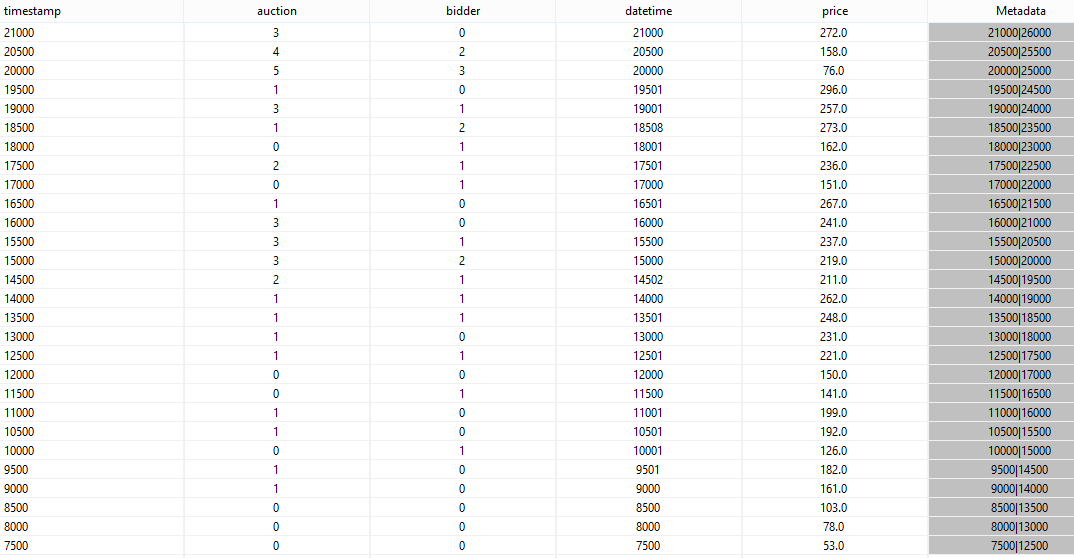...
Another important think to note is, that a new aggregation will be calculated, when a new event arrives a the system. For this example it take 8 seconds before the first value is created. For streams with a low data rate the AssureHeartbeat operator can be used to produce values on a regular base.
There is also the possibility to define groups (as in SQL group by). The below in Element Based Windows for an example.
Window
In the example above you can see that the aggregated values always contain the information of all previous events.Typically, the older the event is, the less interesting is it. An auction system provider may not only be interested in the alltime highest bit, but e.g. the highest bit for a specific time (e.g. the last 24 hours) or related to a number of bit that have been posed.
...
Here you can see the aggregation over 10 second intervals.
| Anchor | ||||
|---|---|---|---|---|
|
Another way to define a window, is based on elements, e.g. the last 10 elements received. In Odysseus, the element based window is implemented with timestamps, too.
Create a new PQL script:
| Code Block |
|---|
#PARSER PQL
#TRANSCFG Standard
#ADDQUERY
out = ELEMENTWINDOW({SIZE=10}, nexmark:bid) |
Here you can sse the operator ELEMENTWINDOW with the parameter SIZE, that defines a window containing 10 elements.
If you start the query, you will see:
If you look at the time stamps, you will see that the end timestamp of the first element is 12500. This is exactly the start time stamp of the eleventh element, that should not be in the same window as the first element (size = 10). To be able to determine the end time stamp the output of the first element, the system needs to be wait until the eleventh element has arrived at the system. So, using element based windows may leed to a higher latency.
In the same way, ADVANCE and SLIDE are used in the time based windows, these parameters can be used here.
A special case in element based windows is the partition parameter. Typically, the size is defined over all elements in the stream. With the partition parameter you can define an attribute that partitions the stream. In this case, the window will defined over elements where the value of this attribute are the same.
Note: If the stream has a low data rate, it may take very long before the first elements are created!
Group By
Predicate Based Window
The most generic way to define windows
